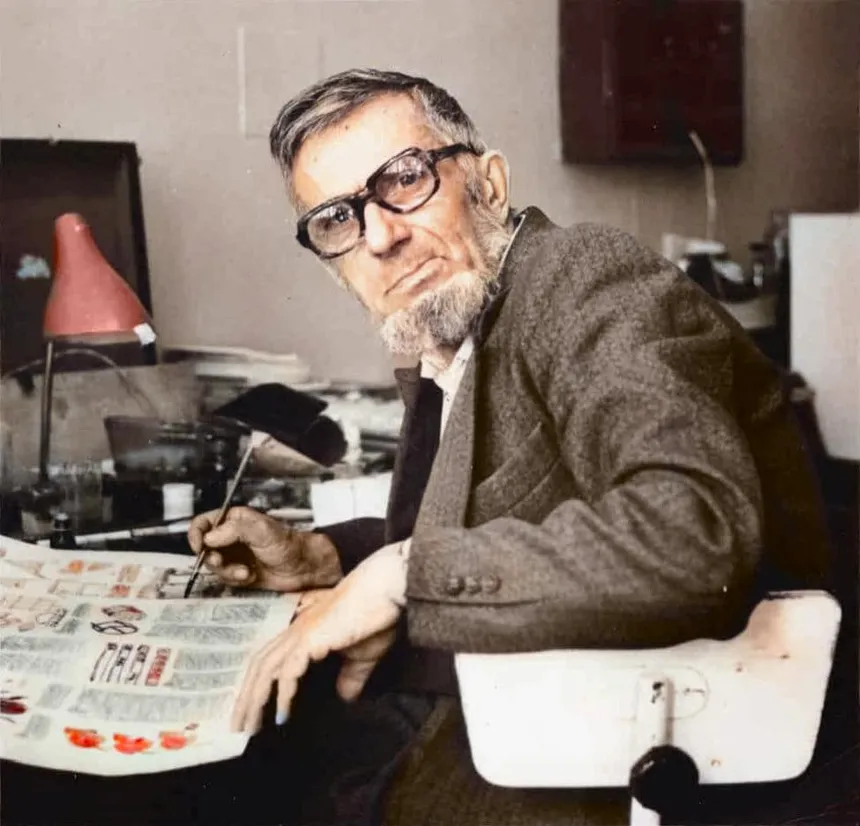Quick Way to Sustainability
The quickest way to sustainable transportation is with levitation

photo of Viktor Grebennikov
The quickest way to sustainability is with exploring levitation for transportation. And yet, the cultural mindset today claims it’s impossible to use levitation technology for transportation; saying it’s something for the future. How much research is currently examining levitation as a source of transportation? There’s a reply: how extensive has the transportation industry explored levitation or Viktor Grebennikov’s levitating platform? Answers are only found with questions. Appropriate questions are only asked by people with a high level of interest and curiosity.
The immediate need to advance short distance transportation
The first step towards legitimizing transportation’s future is acknowledging its skepticism and recognizing that the voice admonishing change is the status-quo. The transportation industry is regulated by those whose interest is in maintaining and growing its existing infrastructure. This routine makes it difficult for advancing transportation’s future. It’s a valid statement that no one knows the future, however, without change everything remains the same.
Directing the social climate to reach beyond the mundane state of its exhausted transportation, is a task to offer something better. The endeavor of seeking a sustainable future is a lofty goal yet, by itself is an empty objective. The realistic approach for the future of transportation is merely finding an efficient use of energy source. The current paths of transportation follow methods of lesser resistance of propulsion. Every avenue of development along this beaten path, continues with results of resistance. Exploring levitation finds an open door without energy resistance.
The momentum of disintegration speed
One of the attributes of resistance is the unforgiving presence of thermodynamic loss and friction with the destructive nature of centrifugal force.
A harsh consideration with space travel in Earth’s atmosphere is its disintegration speed. The pull of Earth’s gravity on a craft through the gases of its atmosphere cause significant heating. Objects re-entering at typical speeds, around 17,450 miles per hour for low Earth orbit, to around 28,000 miles per hour for higher orbits; are subject to potential disintegration. This high speed leads to compression of the air ahead of the object, causing temperatures to rise to over 3000 degrees Fahrenheit. The compression and heating can be so intense that it results in the formation of a plasma sheath around the object, which can cause disintegration if the object is not properly shielded.
Scientific approach towards levitation is vital to transportation
In the blogpost, Extending CSE Research, it highlights research of the Cavity Structures Effect (CSE):
According to B. N. Rodimov (1976, as cited by Frolov, 2001) the walls of multi cavity structures can be considered as the boundaries of the potential electron’s box. The group movement of electrons leads to a system of standing de Broglie waves, which have classic frequencies.
The classic frequencies are f = nh/4mL2, where n is an integer number, L is the circumference of cavity in centimeters, and m is the effective mass of the electron. As an example, the classic frequency for 4.9 mm (side to side) diameter honey bee comb cell is calculated. The effective mass of an electron in beeswax is a bit hard to calculate, and therefore, in the calculation the free electron rest mass is used.
f = 1 · 6.626 · 10-34kgm2s-2 / 4 · 9.11 · 10-31kg · (1.7cm)2= 0.63 Hz
Further, Zolotariov gives a formula for the locations of de Broglie wave maximums: D = 2L(N+1)2K, where L is the circumference of the tube, N is the harmonic number of the wave, and K is the number of the anti-node/maximum.
The importance of understanding CSEs is imperative for utilizing them as a source for motion. Also in the previous blogpost, the article from pdfcoffee was referred to:
In summer 1988, an entomologist from Novosibirsk city, Viktor Stepanovich Grebennikov, examined a micro-structure of the lower surface of beetles’ wing case by a microscope and became interested by “an unusually rhythmic, extremely ordered, incomparable honeycomb, solid multidimensional composition, which looked as if it was pressed by some complicated automatic machine”. Studying this amazing micro-pattern allowed Grebennikov to design an aircraft of a new kind called “Gravity plane”. As usually, this discovery was made by chance. Once Grebennikov put a chitin bristle from some beetle’s shell under a microscope and wanted to put another one but it slipped out from tweezers and… hung in the air.
Patterns of CSEs
Honeycombs have six-sided openings. This geometric structural design is referred to as part of sacred geometry. There’s a relevance to these designs and Earth’s atmosphere. The curvature of this pattern is replicated in flower petals.
What’s the relationship between levitation, honeycomb design of bee hives, CSEs, and a gravitational void? Grebennikov indicated stacking of the cavity structures increases its effect. What are the multiples of its amplification? At what point does the stacking of CSEs amplify the voids into producing a reaction with Earth’s atmosphere? Where are the studies of how Earth’s atmosphere reacts with a gravitational void in a standing platform? And how many sets of cavity structures stacks are required to attain levitating a platform and its passenger load?
The blogpost, How Vehicles Can Levitate, asks the most relevant question: How can vehicles levitate?
When challenged with a difficult question, a good procedure is to find simplistic similarities. Given the task of finding solutions enabling a levitating vehicle, there are three similarities: vibration, Earth’s atmosphere, and the magnetic field of Earth’s core. Grebennikov’s CSEs can provide a platform. Earth’s core can provide a stable electromagnetic foundation. Earth’s atmosphere can provide a static reaction.
Grebennikov’s discoveries led him to a more intense study that introduced him to a specific type of beetle whose wings are made with this same structure. Eventually, he made a small two feet by two feet platform and, allegedly was able to make the platform levitate. He was able to stand on the platform and control it to travel on. He also wrote that if he were to make the levitating platform available to the public, he feared his life would be abruptly ended.
So, the question remains: did Grebennikov really accomplish it? The CSE’s have been scientifically validated. They are legitimately mathematically classified as a void. This is different than a vacuum. It’s different than a magnetic or electric negative field. It is a gravitational void; however, that’s a personal speculation. From the data CATTCC has studied, the speculation concludes: it is a gravitational void.
Other types of levitation
From the blogpost, 5th in This Levitation Series, shows magnetism as means of levitation for transportation:
What is a more efficient method of transportation?
The obstacle of maglev technology is a fundamental of physics: for every action there is an equal and opposite reaction. This identifies the magnetic action as a complete function. Magnetic motion requires a fixed position of either the positive or negative field. This confines transportation motion to a fixed guideway. This is similar to jumping up in the air and catching your feet with your hands; enabling your body to stay suspended in the air. This closed magnetic action eliminates maglev technology the practicability of convenience and independence to replace the automobile as an alternative mode of transportation.
The future of transportation requires floatation. The obstacle to maglev technology, is having no interaction with either the electrostatic properties of the atmosphere nor Earth’s magnetic field. The floatation of levitation is its own action; it involves an interaction with atmospheric subatomic forces and/or a gravitational interaction.
Levitation provides flexibility of efficient transportation independence, without a fixed guideway.
Conclusion
The most relevant provider of research towards using levitation for transportation is Viktor Grebennikov. For those interested to learn more of Grebennikov, can read a portion of his most valuable writings about his device in Chapter 5 of his book, “My World”. This is a fascinating 35-page PDF, explaining how he discovered and built his levitating platform.



